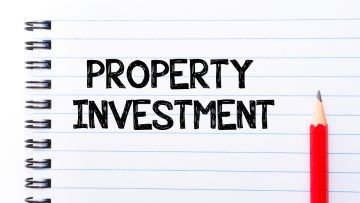Figures released today indicate that the surging buy-to-let market earned British landlords a staggering £112bn in rents and capital gains over the last year. The findings appear to spell bad news for first-time buyers, with the popularity for investment pushing their dreams of homeownership further away.
Investment
Rising property prices and more condensed mortgage-lending criteria have lead more and more investors to come into the rental market. The report from mortgage lender Kent Reliance showed that landlords in Britain made an incredible £67.2bn in capital gains, with an additional £44.3bn in rent, in the year to March 2015. This combined total was an increase of £5.8bn on same period one year ago.[1]
Ever growing rents are a key contributor to the increase, with particular strong growth in London and the South-East enhancing profits. The figures suggest that landlords are making almost £4bn per month in rental yields from their properties. The average monthly rent grew by 3.9% in the first quarter of this year, to now stand at £832. These figures suggest the largest rise since the Autumn of 2013.[2]
Bright forecast
New pension reforms that came into force last month are likely to bring even more money into the Buy-to-Let sector. Kent Reliance predict that by the year 2020, the total number of rental properties will by 5.5m, which would represent about 20% of all homes.[3]
The Office for National Statistics and Land Registry’s latest figures show that landlords now own properties with a total value of £990.7bn. This is more than three and a half times the £262bn what the sector was worth in 2001.[4]
Andy Golding, chief executive of OneSavings Bank, owner of Kent Reliance, feels that, ‘buy-to-let has come of age, moving from a niche asset class to one big enough to rival the stock market.’ He thinks that, ‘landlords are seeing the benefit of a structural change in Britain’s housing market, with tenant demand ever strengthening.’[5]
He acknowledges that, ‘house prices are showing signs of steadying somewhat,’ but says that, ‘growth remains brisk.’ Golding also states that, ‘long-term price inflation is not in danger, given the gaping chasm between growing demand for housing and the number of houses being built each year.’[6]
Concluding, Golding said, ‘combined with the dearth of high LTV lending to first-time buyer, this will continue to buoy demand for rental accommodation as well as landlords’ returns and the sector will continue to expand.’[7]
[1] http://www.theguardian.com/money/2015/may/28/booming-buy-to-let-112bn-landlords

Is it Time to Leave the Buy-to-Let Market for Good?
This year has seen record numbers of landlords selling their rental properties in response to regulatory changes and economic uncertainty …
Could property investment soon become financially unviable?
A leading industry peer has moved to voice his concerns surrounding the future of the buy-to-let market, following recent announcements …
Buy-to-let investors set to look North
Fresh research from the Legal & General Mortgage Club has revealed that a number of brokers believe that the North …
Buy-to-let investors targeting smaller, cheaper properties
A new report from Mortgages for Business has analysed buy-to-let purchase activity during the first three months of the year.Data …
Is the Government, ‘wiping out the buy-to-let economy?’
The Chancellor’s failure to add any further or amend any existing tax reforms will only serve to have far-reaching consequences …
